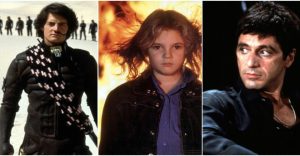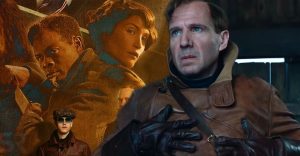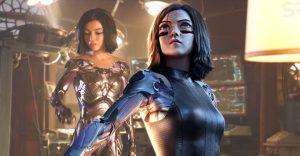10 Things Marvel Ripped Off From DC (And 10 That DC Copied From Marvel)

Marvel and DC are the two titans of the comics industry. They’ve been in the business since the 1930s, and their impressive roster of titles and heroes has naturally led to endless argument about which is better. One of the biggest lynchpins in the argument is which company is more original. In other words, which has ripped off the most from the other. It’s a classic battle, like Coke vs Pepsi, and much like the Cola Wars, this comics rivalry has seen both sides dip into each other’s ideas.
The argument has raged on for decades, and there are lots of examples where Marvel has ripped off DC, and DC has ripped off Marvel. While this list isn’t here to settle the score, it’s going to give you a peek into the convoluted and convenient history of the companies’ inspirations. Sometimes it looks like the companies have copied straight from each other, while other times they’re both copying from somewhere else.
The companies have also shared more than just ideas and sources. They’ve shared creators and, in more than a few cases, these writers and artists manage to produce some rather similar characters.
Here are 10 Things Marvel Ripped Off From DC (And 10 That DC Ripped Off From Marvel).
20 MARVEL: BLACK CAT FROM CATWOMAN

It made a lot of sense when DC comics took the term cat burglar to its superpowered logical conclusion in 1940 with Catwoman. She’s Batman’s long-running anti-hero will-they-won’t-they love interest, with an ambiguous morality and cat-themed look. She stands in marked contrast to the more villainous of Batman’s rogues, with a hard backstory and a penchant for jewel-theft over anarchy.
In 1979, Marvel introduced Spider-Man to Black Cat, and she would become his morally ambiguous cat-themed on-and-off love interest with a penchant for burglary.
She is also an acrobatic martial artist with disguises, stealth, and trickery that make her a carbon copy of Catwoman — down to the femme fatale attitude.
She does have some bad-luck powers, but like Bumblebee, it’s not enough to set her out of Catwoman’s feline shadow. In 2004 their storylines converged even more, both becoming crime bosses at the same time.
19 DC: AQUAMAN FROM NAMOR THE SUBMARINER

While flying heroes are a dime a dozen, there are only two classic heroes whose domain is the entire ocean. Namor the Submariner, debuting in 1939 in Marvel Comics #1, started as an antihero, an agent of chaos. He has gills, an incredible swimming ability, super strength, speed, and stamina — he can also control water and telepathically connect to all marine life. Early in his run he threatened to sink Manhattan under a tidal wave.
Those are also the powers of the Atlantean king of DC comics: Aquaman. Aquaman is also an outsider with a troubled relationship with the surface world, superhuman speed and strength, especially underwater, and the ability to command ocean life. While he only made his first appearance in 1941, he did beat Namor to the post of being labeled an Atlantean. Namor’s home and origins were only identified in 1949.
18 MARVEL: DOCTOR STRANGE FROM DOCTOR FATE

Doctor Fate is the premier magic-wielding doctor in DC comics, with his first appearance in 1940. He draws his powers from artifacts like the Amulet of Anubis, the Cloak of Destiny, and the Helm of Fate, which combine to give the sorcerer phenomenal powers. The first Doctor Fate was archaeologist Sven Nelson, fighting crime and supernatural danger from a tower in Massachusetts. He became a medical doctor in 1942.
Doctor Fate’s description sounds a lot like another medical doctor who uses an amulet and magic cloak to help him fight supernatural threats and master the arcane arts.
Marvel’s Doctor Stephen Strange made his first appearance in 1963, and since then has defended New York and the universe from his secluded Sanctum Sanctorum.
17 DC: BUMBLEBEE FROM THE WASP

The Wasp is one of the great female heroes of the Marvel Universe: one of the longest serving Avengers, and their leader after Tony Stark — she even named the Avengers! Janet van Dyne can fly, change size thanks to Pym Particles, fire bio-electric energy blasts, and control insects like Ant-Man. However, she’s not the only heroine flying around sporting her thematic black-and-yellow look.
Thirteen years after the Wasp first appeared in 1963, DC debuted Karen Beecher as Bumblebee in Teen Titans #45. With a suit that gives her powers identical to the Wasp’s, including electric shock stingers, she became a member of the teenage team-up. Later on, she developed the ability to fire off sonic blasts, but that’s not quite enough to distinguish her from her famous Marvel predecessor.
16 MARVEL: THANOS FROM DARKSEID

With Infinity War just around the corner, it’s hard to escape images of the Mad Titan. Huge, purple, and sporting boots that mean business, Thanos has certainly got a distinctive look. It’s too bad it’s a look that, along with his powers and his universal megalomania, makes him a dead ringer for DC’s Darkseid.
Darkseid made his debut in a cameo in 1970, three years before Thanos would make his first appearance in Iron Man #55.
We’d next see the tyrannical ruler of Apokolips in 1971, and he’s been a mainstay DC villain ever since. Darkseid boasts extreme superhuman strength, speed, intelligence, energy manipulation powers, as well as a ruthless will to dominate the universe. He can also fly and teleport, and is basically immortal. Thanos boasts the exact same set of powers, as well as sharing Darkseid’s love of brooding on a throne.
15 DC: BLACKEST NIGHT FROM MARVEL ZOMBIES

Alternate universe comics are always entertaining, and zombies have been a phenomenon for the last few years. Marvel made a great call with its Marvel Zombies event, running from 2006 to 2007. A strange infection turns the Marvel heroes of Earth-2149 into zombies, though not shambling mindless ones. They keep their powers and intellects, but are driven by “the Hunger” to devour human flesh.
Zombie superheroes were also the focus of DC’s 2009-2010 Blackest Night event, where the personified force of the Grim Reaper, Nekron, raises superheroes to crush out all life. While the Marvel zombies hunger for flesh, the Black Lanterns devour emotions. The story was more closely tied to DC’s main continuity, and led to the follow-up series Brightest Day, which resolved loose threads from resurrected heroes.
14 MARVEL: MOCKINGBIRD FROM BLACK CANARY

Continuing the tradition of similar animal-named heroes we have Marvel’s Mockingbird, who bears a strong resemblance to DC’s Black Canary. Black Canary made her first appearance in 1947, and since then she’s shown off her martial arts and espionage skills. By 1969, she had been given a truly superhuman ability in her sonic Canary Cry.
Meanwhile, Marvel’s Barbara Morse took a while to eventually settle on her Mockingbird monicker and black leather look in 1980. Her early appearances have her as a biologist, and later she became Agent 19 of S.H.I.E.L.D., before spending a single issue as the Huntress, meaning she evolved slowly to become more similar to Black Canary.
Like Canary, Mockingbird is a hand-to-hand fighter and an investigator.
Both have had close relationships to other Marvel-DC Robin Hood clones: Hawkeye and Green Arrow. Mockingbird also has a few superpowers, like enhanced healing.
13 DC: ROCKET RED FROM IRON MAN

When Iron Man made his debut in 1963, the audience saw a metal suited superhero shooting out of the Cold War conflict for the first time. In 1987, DC introduced its own metal-suited hero, but this time he hailed from Russia. Both heroes share a love of tech and tinkering with suits to help them protect the Earth.
Where Marvel’s Tony Stark is complex, vice-ridden, and wonderfully inventive, Rocket Red is more muted. He is also less prone to rolling out a new suit of armor for every occasion. Perhaps a combination of being the first, loudest, and most prolific of the two, Tony Stark is by far the more recognizable. It also helps that the original armor was made by Stark himself, whereas the Rocket Red Brigade’s armor was first created by Green Lantern Kilowog.
12 MARVEL: CIVIL WAR FROM KINGDOM COME

This entry has a lot more to differentiate the two, but Marvel’s massive 2006-2007 Civil War comics event shares a number of similarities with DC’s Kingdom Come from 1996.
Both are stories where the most beloved heroes of their universes duke it out over ideology in a conflict that has high stakes and numerous casualties.
Kingdom Come is a more complex inter-generational plot that revolves around the question of the nature and responsibility of being a superhero. Civil War is a conflict between heroes split on the issue of secrecy and privacy versus accountability to the public and government.
They are so similar, in fact, that Marvels’ 1999 Earth-X also shares an interest in a sudden generation of new superheroes in conflict with the old — based on a concept by Alex Ross, who created Kingdom Come.
11 DC: ATOMIC SKULL FROM GHOST RIDER

It’s hard to imagine two people independently coming up with flaming-skull headed superhumans. Marvel debuted its attempt at converting heavy metal into comic book form in 1972. Johnny Blaze was a stunt driver who sold his soul to the demonic Mephisto. Now his body burns with hellfire and he fights evil with his iconic chain along with a host of other superhuman abilities.
Atomic Skull actually started out as a yellow-and-green caped supervillain fighting Superman. It was only in 1991 that we saw Joseph Martin become the Atomic Skull, who is also a man with a flaming skull and a love of leather jackets. Although his origin is a result of genetic mutation from the Dominators, he later also makes a pact with a demonic entity, Neron, for enhanced powers.
10 MARVEL: DEADPOOL (DELIBERATELY) FROM DEATHSTROKE

This is less Marvel ripping off DC and more ripping on its archetypal gritty mercenary, Deathstroke. Slade Wilson is a powerful villain in DC comics — he’s a master strategist, a weapons master, and a powerful martial artist. He’s gone toe-to-toe with swathes of heroes since his debut in 1980 where he took on the Teen Titans.
Deadpool is a direct parody, aping Deathstroke’s hardcore name, two-tone color scheme, and boasting the same guns and swords mix.
Deadpool’s creators knowingly nod to this, giving the Merc with the Mouth a name that is only a shade away from Deathstroke’s: Wade Wilson. His creator, Rob Liefeld, was a Teen Titans fan. After pitching his character, he was told it was indeed too similar to Deathstroke, so he decided to comedically lean into it.
9 DC: BATMAN’S PASSING FROM CAPTAIN AMERICA’S PASSING

One of the recurring features of comic books is characters passing away, and their inevitable resurrections. Following the 2007 Civil War story, readers were shocked when Captain America was shot by Crossbones and a brainwashed Sharon Carter. Then in 2009, we learnt in Captain America: Reborn that Cap was hadn’t passed at all: he had been frozen in space and time. Readers were treated to a strange time-traveling story arc where Steve Rogers falls from time to time and dimension to dimension.
The plot following the passing of Batman in 2008’s Final Crisis was surprisingly similar. During a showdown with Darkseid, Batman is hit and seemingly dispatched by Omega Beams. By the end of the arc, though, it is clear Bats has survived. He was also sent tumbling through time, and we were treated to his epic return to the present in The Return of Bruce Wayne.
8 MARVEL: HYPERION AND SENTRY FROM SUPERMAN

Superman is the most iconic superhero, and so he has been copied many times. Marvel has two superheroes that really are like Superman. Hyperion is the earliest of the two Supes knockoffs. His name is a reference to the Greek sun titan, and is a clue as to where he draws his powers. He debuted as an antagonist in The Avengers in 1969.
He was actively based on Superman, as the story arc involved the Avengers fighting a whole range of JLA-inspired enemies.
Marvel highlighted his similarity with an alternate version who is an alien sent to earth as a baby in Supreme Power.
The second is Sentry, who sports a cape and an S-shaped chest symbol. His first appearance was in 2000 and his powers are very similar to Superman’s, down to Superman’s endless will to be good.
7 DC: RED LION FROM BLACK PANTHER

This is another entry in the animal-themed copycats. Black Panther is one of Marvel’s most beloved characters, even more so after the smash-hit film. As the benevolent King of Wakanda, a technological genius, and a skilled unarmed fighter, T’Challa is a perfect leader. First appearing in 1966, he’s also the first hero of African descent in Marvel. The utopian vision in Jack Kirby’s take on Wakanda came to life in film in 2018.
In 2016, DC introduced its villain Red Lion, and the parallel is blatant. From name to look, the two seem perfect reflections, but where Black Panther is tinged with optimism, Red Lion looks like his cynical counterpart. He’s the dictator for life of war-torn Buredunia, another fictional African country. Their similarity is no accident as Lion’s creator, Christopher Priest, has worked as a writer on many Black Panther comics.
6 MARVEL: SECRET INVASION FROM MILLENNIUM

Marvel’s 2008 Secret Invasion event was a shocker for many readers. Beloved characters revealed themselves as secret Skrull replacements, casting years of actions in a new light. Body-swapping aliens made for a tense story where nobody knew who they could trust. Secret Invasion brought together numerous plot arcs and characters across Marvel’s comics.
The battle against the shape-shifting Skrulls bears quite a few similarities to a DC comic arc: Millennium.
The Millennium arc revealed that a group called the Manhunters had replaced many supporting characters across the DC comics universe with androids or mind-controlled substitutes. These were revealed while the Guardians of the Universe were recruiting the New Guardians. The invasion brings together the Green Lantern Corps, the Justice League, and the Suicide Squad to root out the imposters and defeat the Manhunters.
5 DC: GUARDIAN AND COMMANDER STEEL FROM CAPTAIN AMERICA

When Jack Kirby moved across from Marvel to DC in 1941, he pitched and created Guardian, a hero who carried an indestructible shield. The similarity to Kirby’s other work on Captain America didn’t stop there. Both Cap and Guardian were involved in protecting people before they became superheroes: Cap as a solider and Guardian as a cop. Both are excellent tacticians and hand-to-hand fighters.
One Captain America clone wasn’t quite enough, and in 1978 DC released Commander Steel, who shared WWII origins with Cap. His red, white, and blue suit also made him a visual knock-off. Like Guardian, Steel owes his similarity to Cap to his creator, as Gerry Conway wrote for Marvel before creating Steel. Steel does have a wide range of powers to set him apart from Cap, including infra-red vision and metal skin.
4 MARVEL: QUICKSILVER AND THE FLASH

DC Comics definitely won the race to create a speedster hero in the Flash, who streaked into comics in 1940. The Flash can reach speeds that violate the laws of physics, inducing time travel and universe-resetting opportunities for DC Comics. The red streak with his lightning trail has been a major part of the Justice Society of America from its beginnings. His early incarnation sported a winged helmet, a nice reference to the mythological speedster Hermes, also known as Mercury.
Marvel’s answer to the Flash was the mutant Quicksilver, brother to Scarlet Witch, who first appeared in 1964.
In some incarnations he even wears a white lightning bolt across his suit, perhaps a nod to his DC forerunner. Another nice touch is that Quicksilver is another name for the metal mercury. Perhaps this is less Marvel copying DC and more both copying mythology.
3 DC: IMPERIEX FROM GALACTUS

This is simply a case of DC trying to one-up Marvel’s world eater — Galactus is the devourer of planets and wearer of strangely forked hats. He’s been a nemesis of the Fantastic Four (and the rest of the planet) since 1966. Stan Lee and Jack Kirby wanted to do something different from the conquering overlord archetype, so they created a villain driven by hunger to consume entire planets.
In 2000, DC unveiled its answer: Imperiex. Also a colossal and armored embodiment of an abstract force, Imperiex feels like Galactus turned up to eleven. Where Galactus is an embodiment of the cosmos, Imperiex is an embodiment of the entropy of the cosmos. Where Galactus eats worlds, Imperiex can destroy universes with the power of the big bang. Never has one-upmanship reached such epic proportions.
2 MARVEL: THE AVENGERS FROM THE JUSTICE SOCIETY OF AMERICA AND JUSTICE LEAGUE

The superhero team up was probably always an inevitability, just like the massive crossover events it allows. The question was always who would get there first. The JSA won that honor in 1940, with Doctor Fate, Flash, Hawkman, and Green Lantern among the founding members. It was also the first inter-company team up, as a number of its members were owned by All-American Publications at the time. The better-known Justice League, an all DC team, launched in 1960.
Three years after the Justice League, Marvel would finally bring its heroes together in the Avengers.
The team’s founding members were Ant-Man, the Wasp, Iron Man, Thor, and the Hulk, with the Wasp coining the name. Both the Justice League and the Avengers have led to many spin-off groups. While Marvel was late to the comics party, the studio brought its team to cinemas in 2012, way ahead of the Justice League in 2017.
1 DC: SWAMP THING FROM MAN-THING

This one raises a lot of questions — both Marvel’s Man-Thing and DC’s Swamp Thing share similar looks, powers, and backstories. Both companies independently creating humanoid plant swamp monsters with similar names seems unlikely. Even more improbably, they released within two months of each other in 1971 (May and July, respectively). Len Wein, Swamp Thing’s first writer, had actually worked on an early Man-Thing story which didn’t see print. When the first Man-Thing story did see print, it was only two months before Len Wein’s work at DC comics hit print.
Ultimately, though, both characters are most clearly a rip-off of another humanoid swamp monster: the Heap. The Heap was a 1940s comics character, sometimes swamp muck and other times a garbage heap. Although Marvel got there first with Man-Thing, Swamp Thing rose to great cult status, while Man-Thing never really became a big… thing.
—
What was the biggest similarity that bothered you the most from DC/Marvel Comics? Let us know in the comments!

















